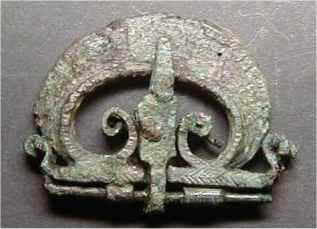
 Roman Military Equipment
Roman Military Equipment
Sword Belt / Cingulum / Balteus
Please visit also the Weapon
section for daggers and swords that were worn using below military
belts
and the Reconstruction
Section
to see examples of complete equipment.
In the first century the sword (gladius)
and dagger (pugio)
were carried using two crossed belts, below an example from the British
Museum in London (gladius Mainz type)

Typical first
century cingulum, Landesmuseum Bonn
Vindonissa Museum, CH; various early principate
cingulum decorations
and belt buckles
Different types if first century belt fittings, in the middle
a stamp
to emboss cingulum fittings, to the right Apron decorations
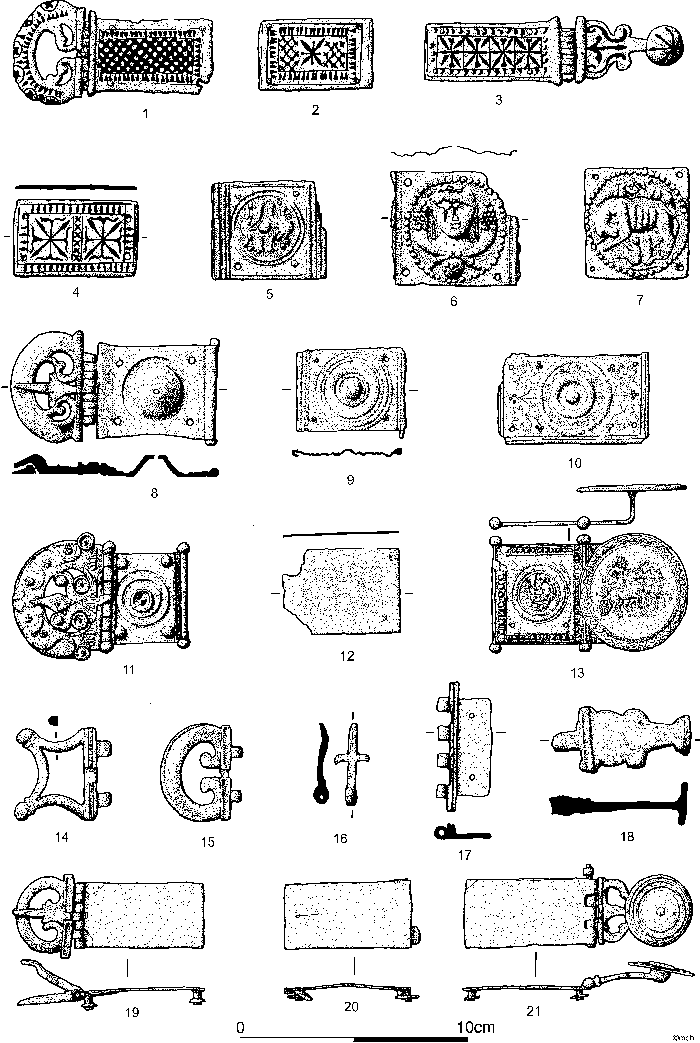


Drawings from Roman Military Equipment by
Bishop &
Coulston, Edition 2, 2006 © M.C. Bishop
Below a first - second century AD soldier`s belt, the cingulum, to carry the dagger (pugio). The short sword (gladius) was usually carried using a thin leather belt over the shoulder, the so-called balteus. See also in the reconstruction section for examples.
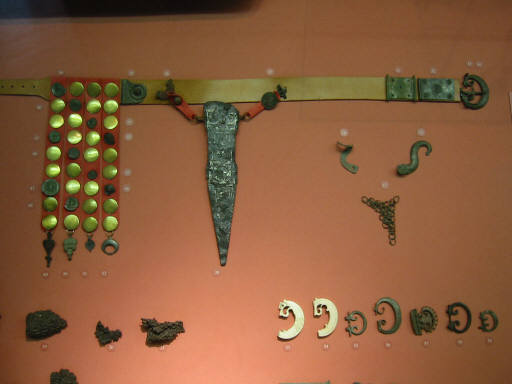
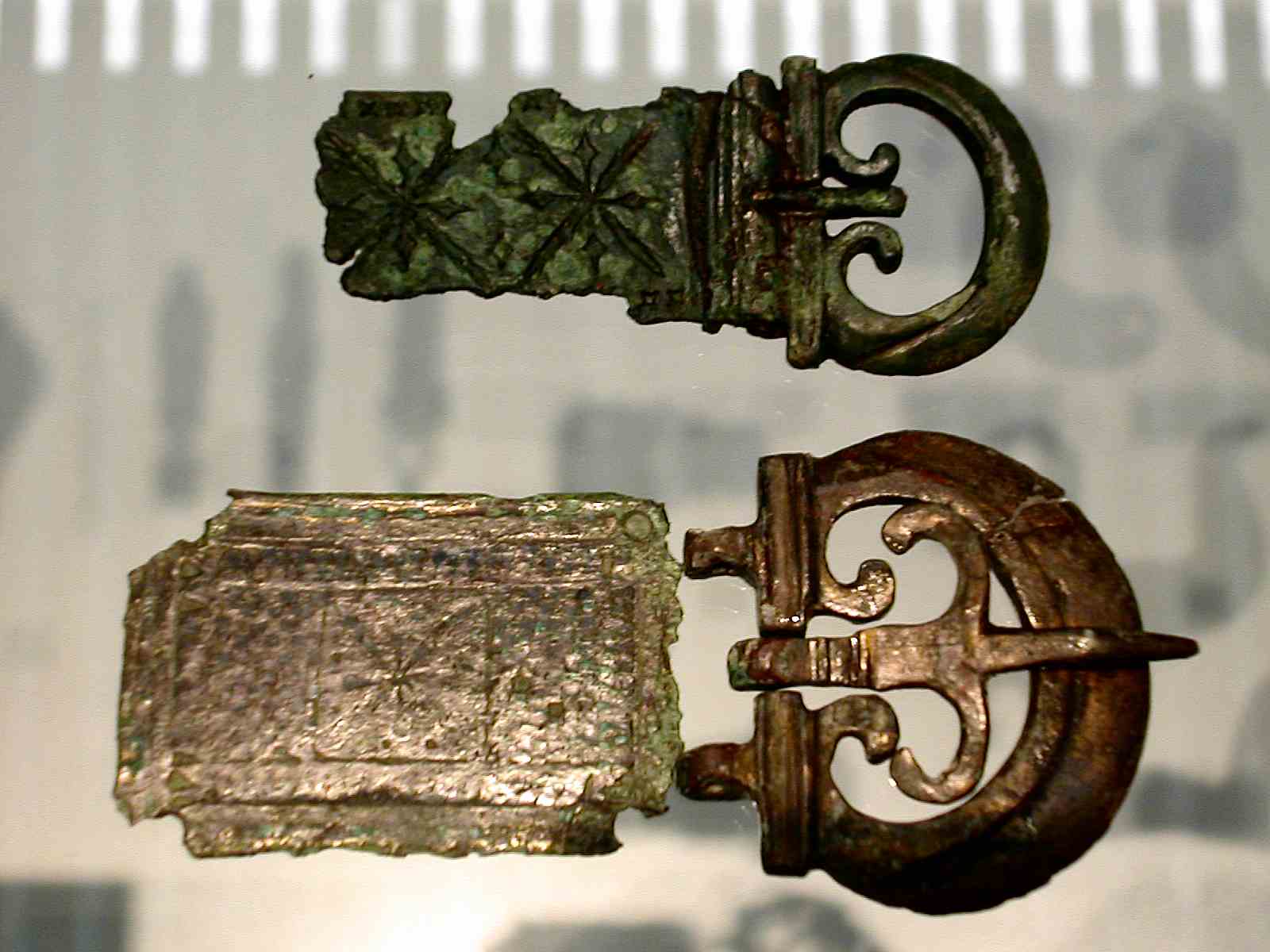
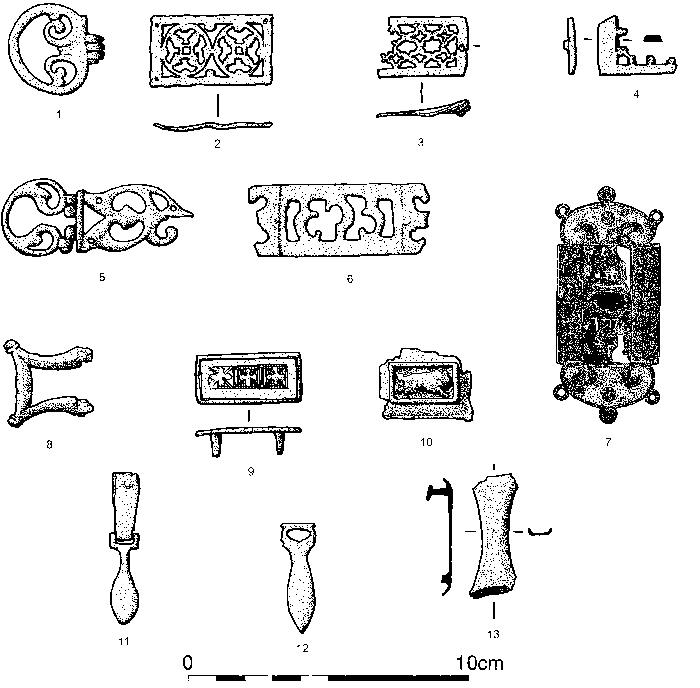
Drawings from Roman Military Equipment by
Bishop &
Coulston, Edition 2, 2006 © M.C. Bishop
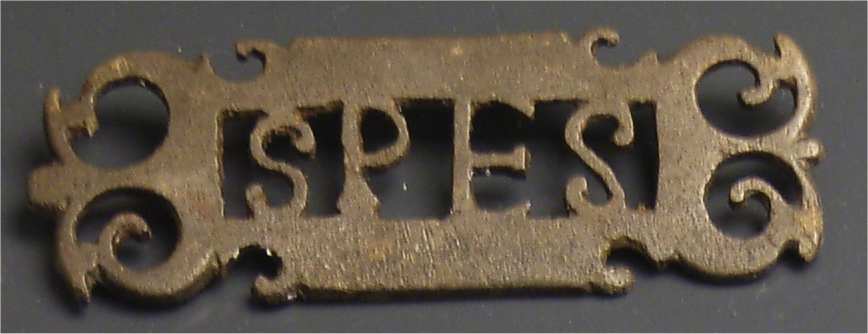 Spes, Munich Archeological
Museum
Spes, Munich Archeological
Museum
Soldier`s belts of later centuries, note the UTERE (FELIX)
decoration
on the example to the far right, also the neo-celtic design of the
middle
belts.
Burial of Lugdunum with UTERE FELIX belt fittings (left), balteus decoration with neoceltic and Numerum Omnium design.
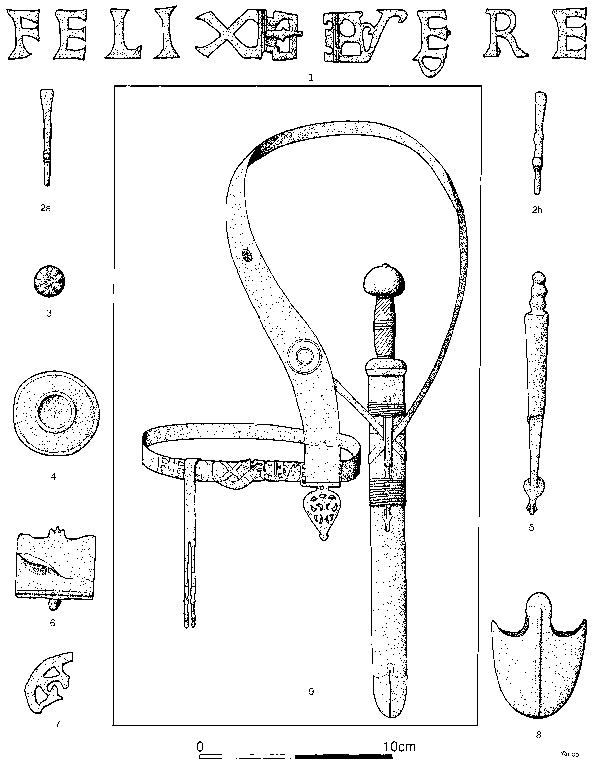
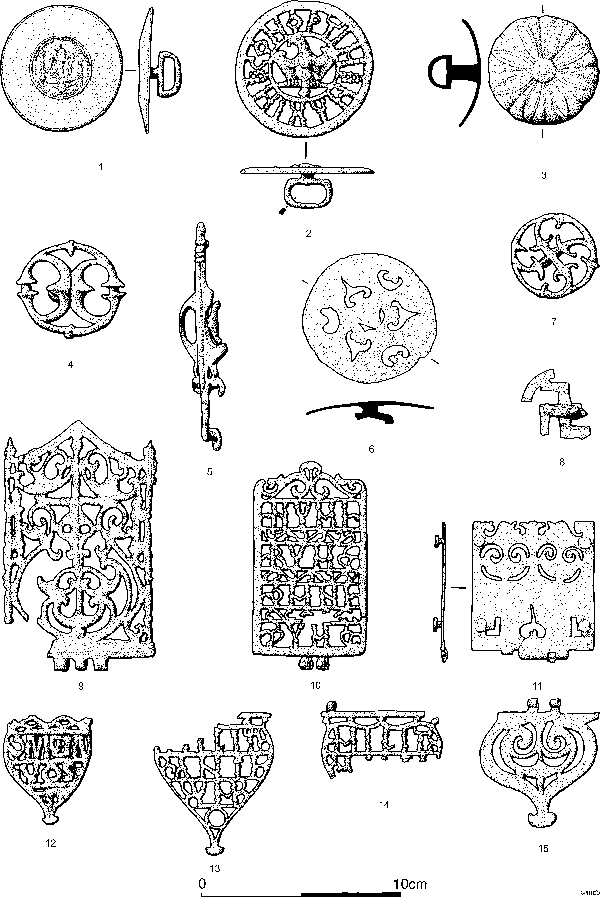
Drawings from Roman Military Equipment by
Bishop &
Coulston, Edition 2, 2006 © M.C. Bishop
Balteus Decoration for a 3rd century sword belt, Numerum
Omnium type.
red background is RGZM Mainz, white background is Landesmuseum Bonn
other belt decorations, the distinction between cingulum and
horse harnish
decoration is often not possible, below with Swastika design popular in
those days
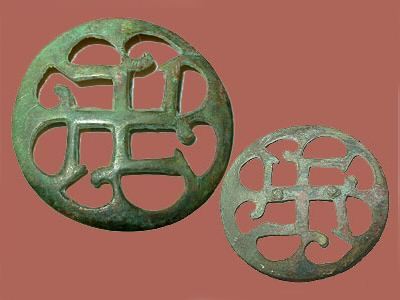
Finally an example of the elaborate decoration of a later
broad Roman
balteus,
on the backside a heavy bronze ring to fix the end of the baltheus
coming
from the left shoulder. Please take a look to the reconstruction
section to see the entire equipment of a late Roman soldier:
Beautiful Scabbard decoration in guilded silver, 3-4th century
AD
RG Museum, Köln
Sword Belt Decoration in guilded silver
RG Museum Römisch
Germanisches Museum, Köln
Square and ring belt buckles and fittings, 3rd-4th centrury AD
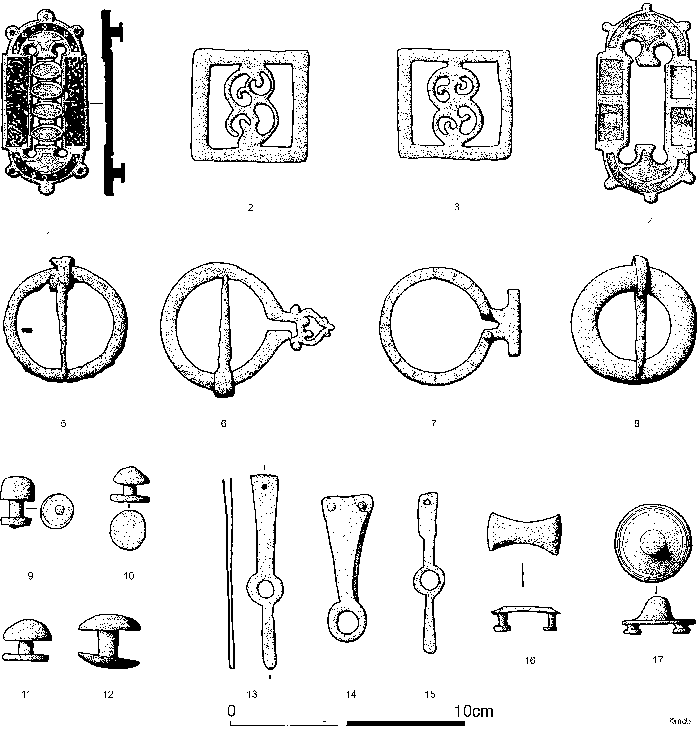
Drawings from Roman Military Equipment by
Bishop &
Coulston, Edition 2, 2006 © M.C. Bishop
Roman "propeller" type belt decorations, 4th century AD
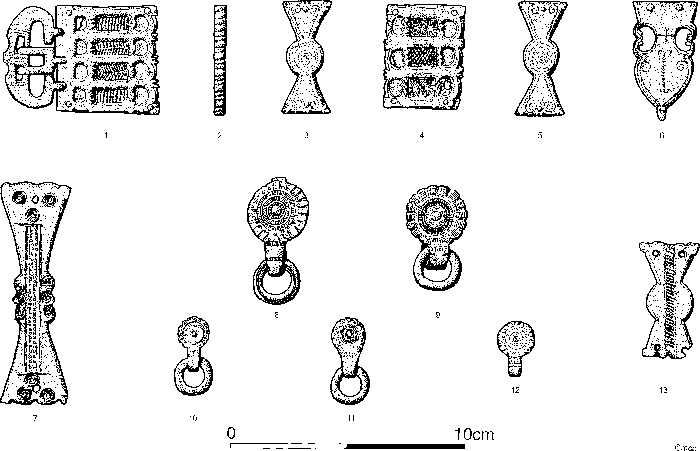
Drawings from Roman Military Equipment by
Bishop &
Coulston, Edition 2, 2006 © M.C. Bishop
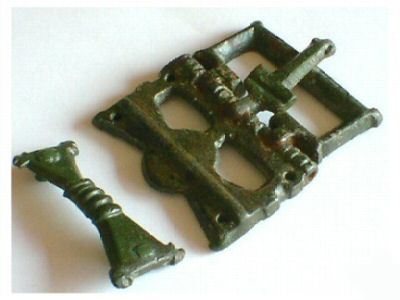 Image
collection of Ron Macina
Image
collection of Ron Macina
Other designs of this period:
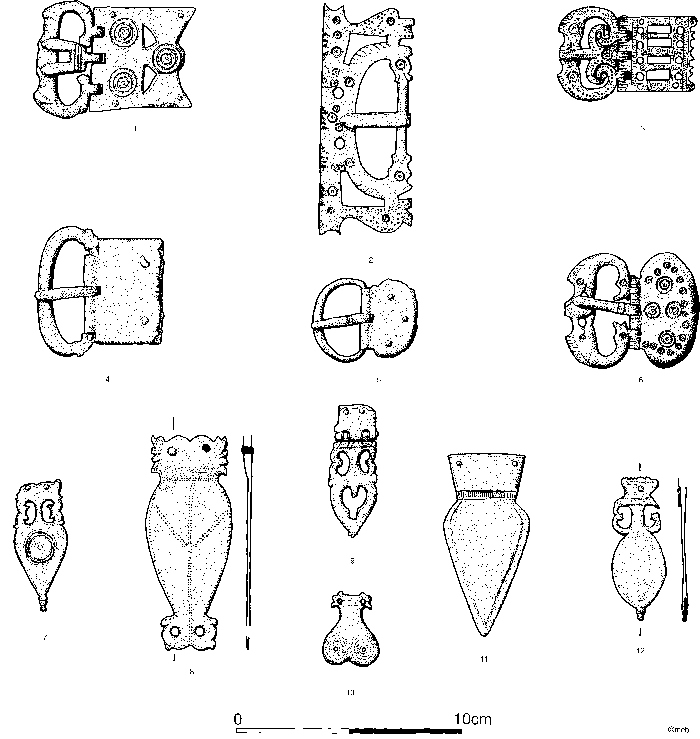
Drawings from Roman Military Equipment by
Bishop &
Coulston, Edition 2, 2006 © M.C. Bishop
Fourth / Fifth Century AD
Reconstruction of belts of the fourth/fifth century AD (left),
Kerbschnitt
type belt fittings (right)
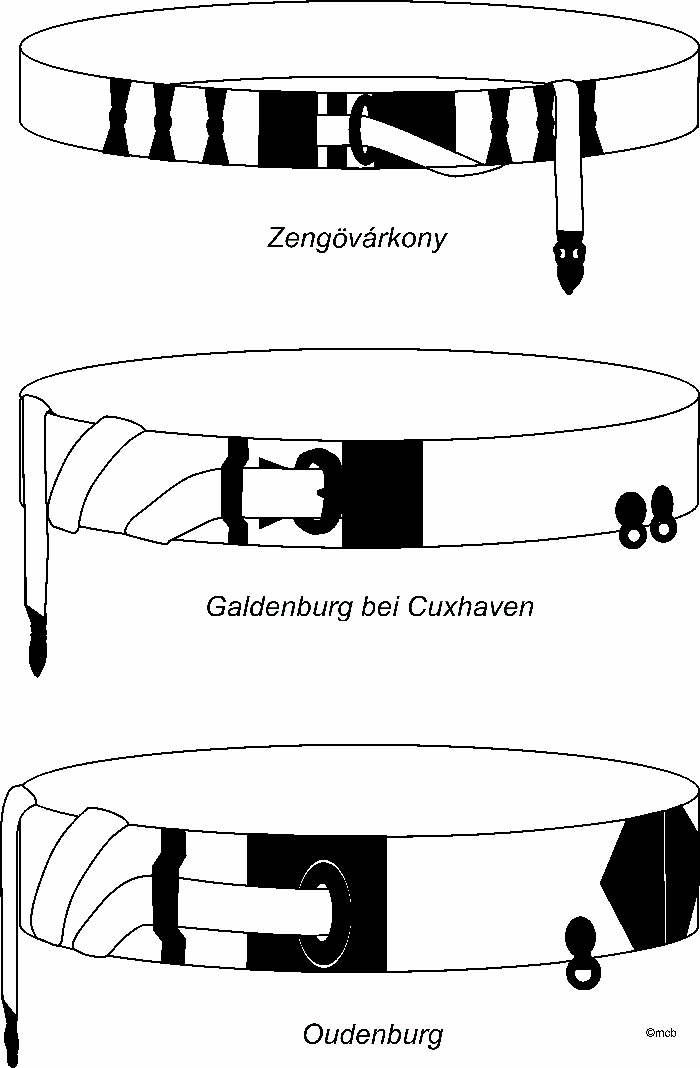
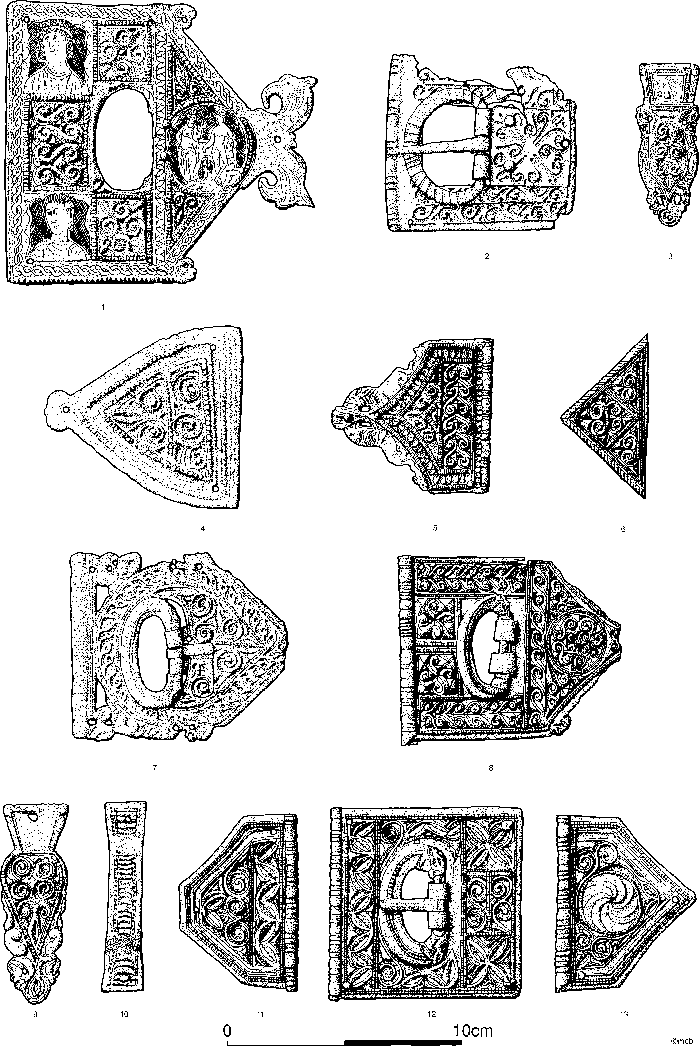
Drawings from Roman Military Equipment by
Bishop &
Coulston, Edition 2, 2006 © M.C. Bishop
Belt buckle in the so-called "Kerbschnitt / chip-carved'"
technique,
with Germanic decorative elements, this example from the Archeological
Museum Munich
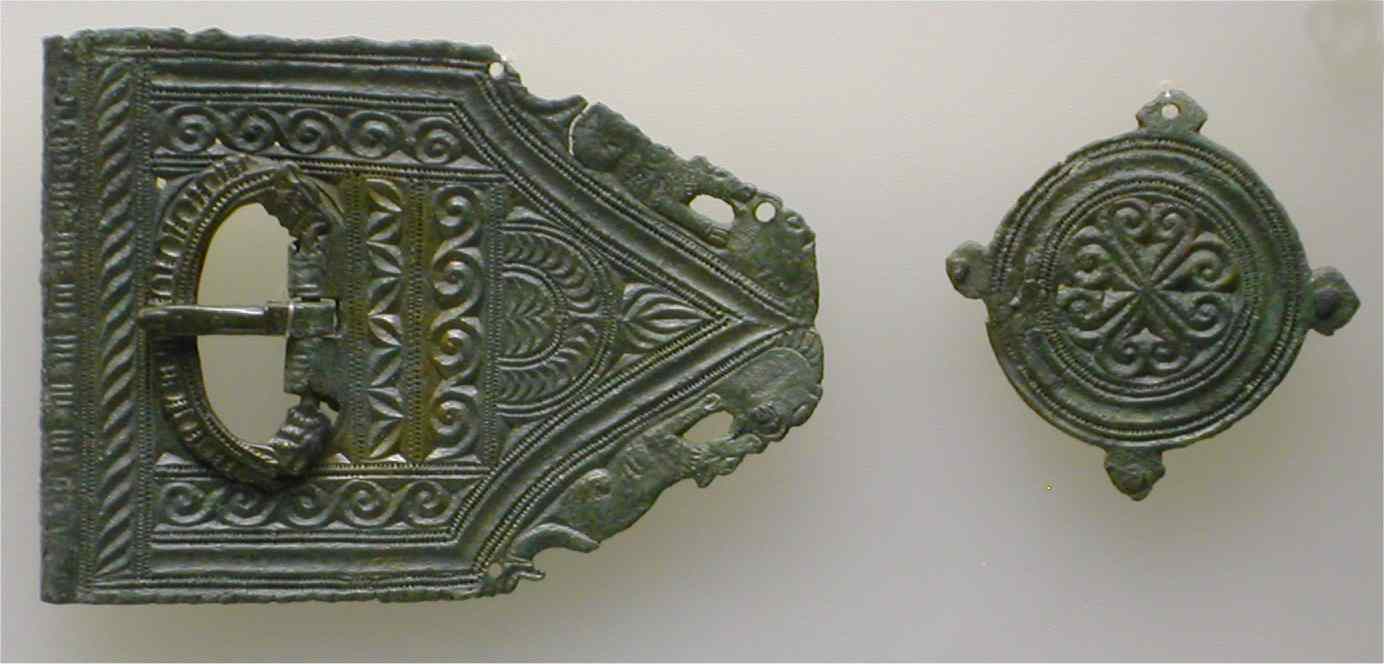
Early Christian, possibly mid 4th Century, Roman military belt
decoration
with letters in silver, seen in the art market.
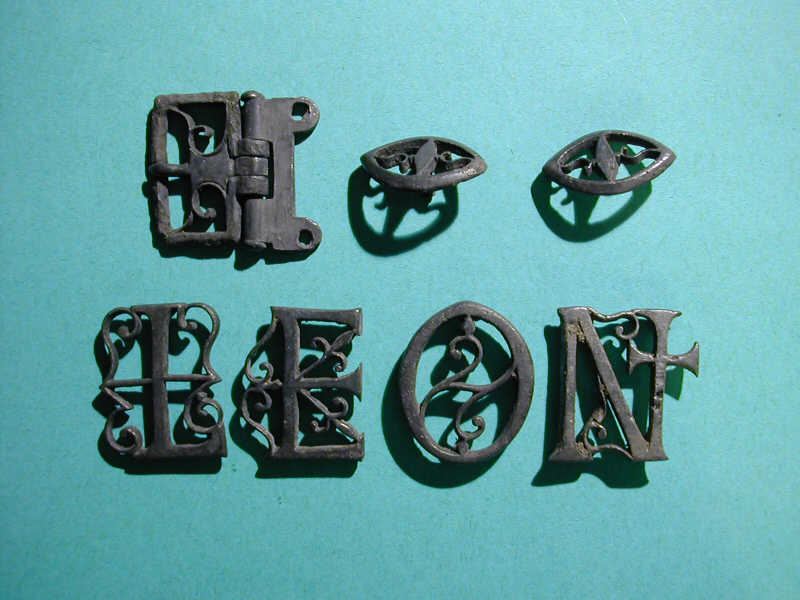
Related Sections of the Roman Numismatic Gallery:
The Location
of Roman Legions
from Caesar to ca. 300 AD is summarized in a table.
Military Equipment
Military Diploma
Roman Legionary Bricks
Countermarks of roman legions on coins are shown in the Legionary
Countermark section.
Coins making reference to roman legions are to be found in the Legionary
Coin section.
Wars and Victories on Roman
coins.
Roman Military Main Page